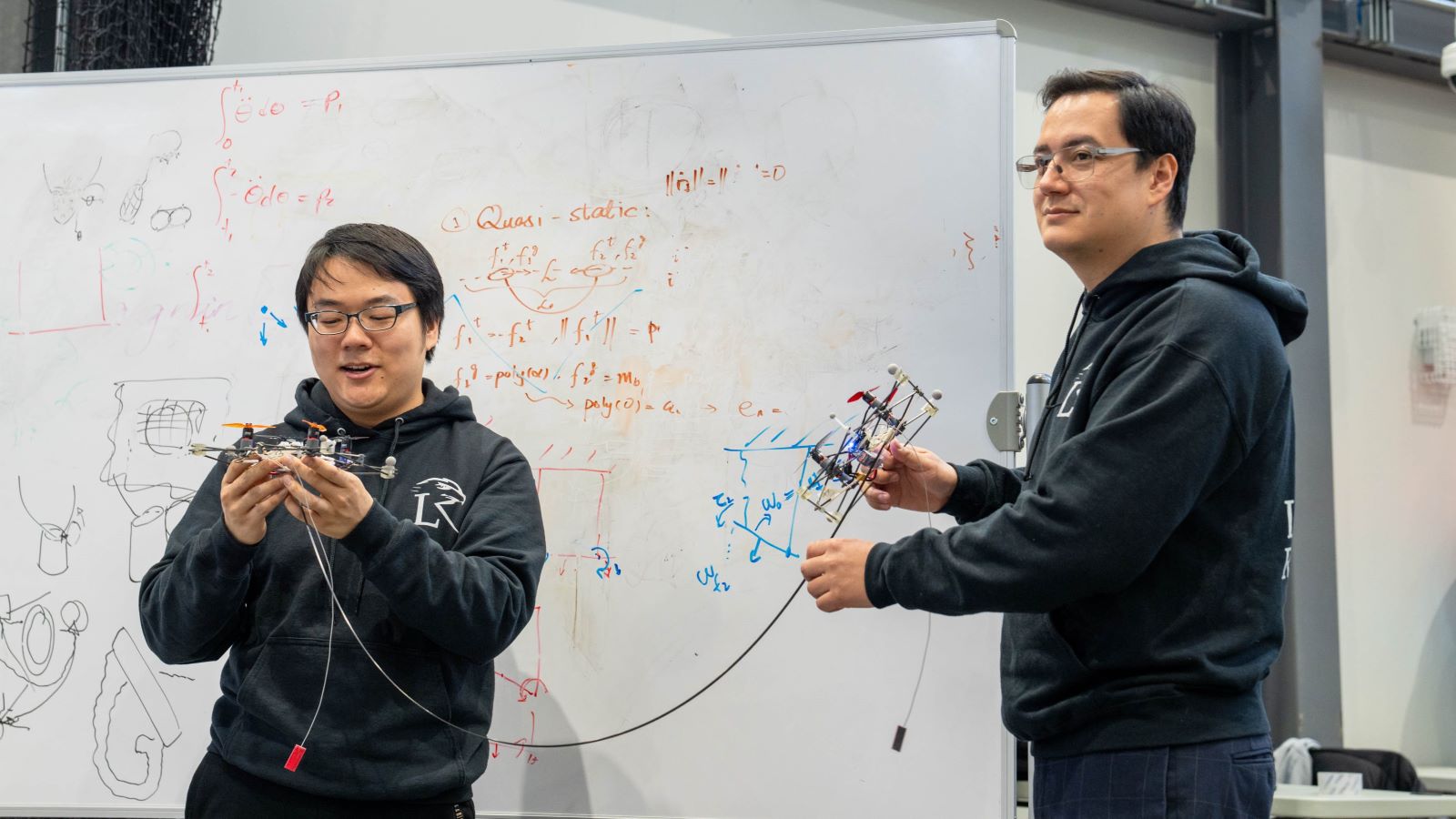
When we think about drones, we tend to think about Amazon. But their potential is much greater, and arguably far more important, than dropping off a box of laundry pods by lunchtime (an idea that’s struggled to take off since Jeff Bezos floated it more than a decade ago).
Aerial robots could be a huge asset, saving time, money, and workers’ well-being, in industries like construction where humans often have to heft materials up multiple floors, says David Saldaña, an assistant professor of computer science and engineering. They could also deliver lifesaving supplies in disaster areas. “The goal would be to get to a point where people don’t have to touch the robot at all,” says Saldaña. “Instead, we could just tell the robot to pick up that box of medicine and deliver it where it is needed.”
Traditional aerial systems in the literature have centered on robotic arms for autonomous grasping, which are heavy and hard to fly with as they change the drone’s center of mass. Weight-saving solutions have included using an origami-like construction and very small motors. Saldaña and his team, which includes Subhrajit Bhattacharya, an assistant professor of mechanical engineering and mechanics, were recently awarded a three-year, nearly $600,000 grant from the National Science Foundation for an idea that takes an entirely different approach: using cables, knots, hitches, and often multiple robots to move objects in the air.
Read more about their NSF-funded project in the Spring 2024 issue of Resolve magazine.

